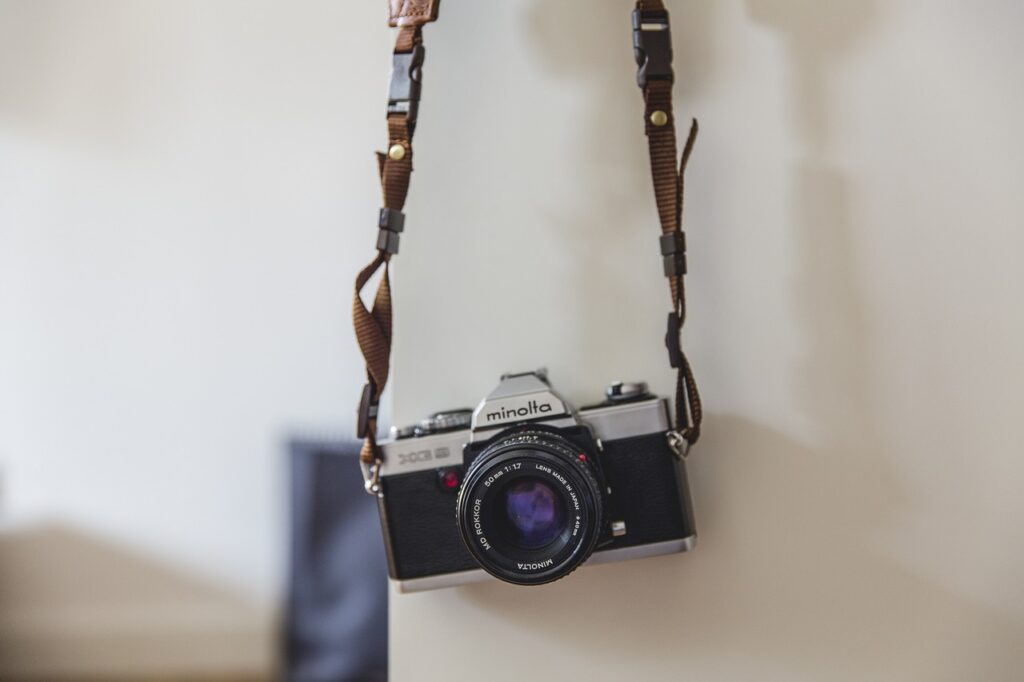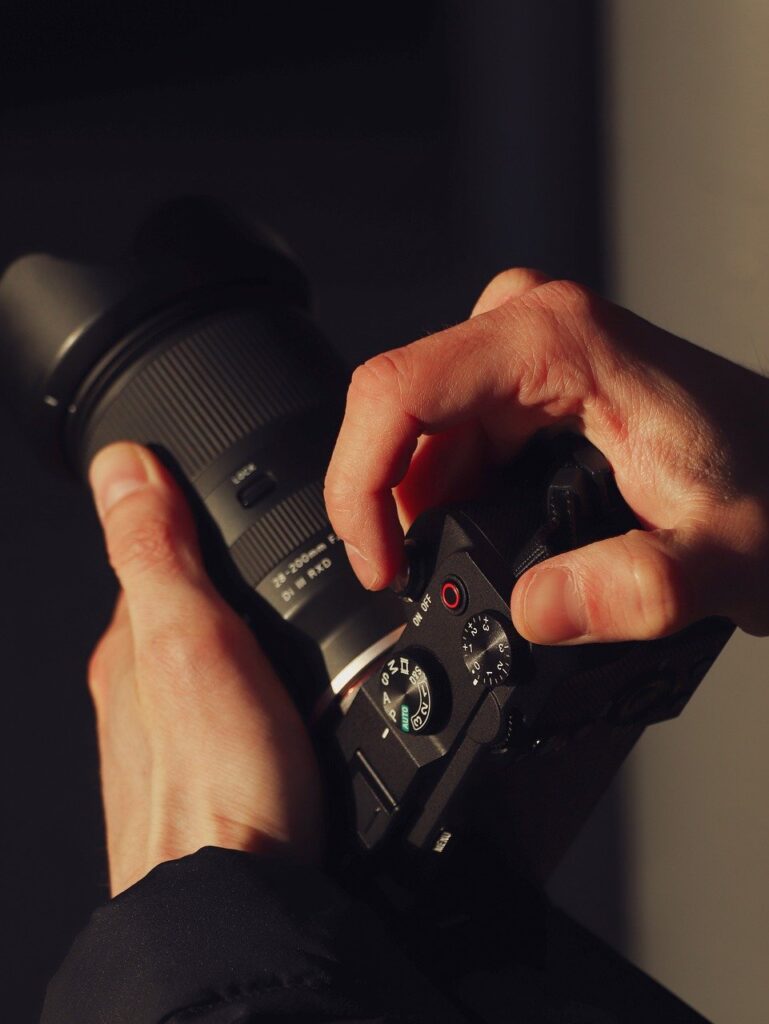In this article, you will discover a comprehensive explanation of the exposure triangle in photography. If you’ve ever been intrigued by the beautiful images captured by professional photographers, understanding the exposure triangle is crucial. Packed with photography techniques and knowledge, this article will unravel the mystery behind the exposure triangle, helping you take your photography skills to the next level. So, let’s embark on this fascinating journey together and unravel the secrets behind stunningly exposed photographs!

DragonfliesAndLadybugs for more.
Understanding the Exposure Triangle
What is the Exposure Triangle?
The exposure triangle is a fundamental concept in photography that refers to the relationship between three key components: aperture, shutter speed, and ISO. These three elements work together to control the amount of light that enters the camera, ultimately determining the overall exposure of the image. By understanding and mastering the exposure triangle, you can achieve the desired level of brightness, sharpness, and depth in your photographs.
Why is the Exposure Triangle important?
The exposure triangle is crucial because it allows photographers to have full control over the exposure settings of their camera, giving them the ability to capture images with precision and creativity. By manipulating the aperture, shutter speed, and ISO, photographers can achieve various effects, such as freezing or blurring motion, creating a shallow or deep depth of field, and controlling the overall brightness and image quality. Understanding the exposure triangle empowers you to take control of your photography and capture images that truly reflect your artistic vision.
Components of the Exposure Triangle
-
Aperture
What is Aperture?
Aperture refers to the opening in the lens through which light enters the camera. It is measured in f-stops, such as f/2.8, f/5.6, or f/11. The smaller the f-stop number, the larger the aperture opening and the more light that enters the camera.
How does Aperture affect exposure?
Aperture directly affects the exposure by controlling the amount of light that enters the camera. A wider aperture (smaller f-stop number) allows more light to enter, resulting in a brighter exposure. Conversely, a narrower aperture (larger f-stop number) restricts the amount of light, resulting in a darker exposure.
Relation between Aperture and Depth of Field
Depth of field refers to the range of distance in a photograph that appears acceptably sharp. Aperture plays a crucial role in determining the depth of field. A larger aperture (smaller f-stop number) creates a shallow depth of field, with the subject in focus while the background appears blurred. On the other hand, a smaller aperture (larger f-stop number) increases the depth of field, resulting in a larger area of the photograph in focus.
-
Shutter Speed
What is Shutter Speed?
Shutter speed refers to the length of time for which the camera’s shutter remains open, allowing light to reach the camera’s sensor and create an exposure. It is measured in fractions of a second, such as 1/1000s, 1/250s, or 1/30s.
How does Shutter Speed affect exposure?
Shutter speed directly affects exposure by controlling the amount of time light is allowed to enter the camera. A faster shutter speed (such as 1/1000s) allows less light to enter, resulting in a darker exposure. Conversely, a slower shutter speed (such as 1/30s) allows more light to enter, resulting in a brighter exposure.
Relation between Shutter Speed and Motion
Shutter speed also plays a crucial role in capturing motion in a photograph. A fast shutter speed can freeze fast-moving subjects, capturing them in sharp detail. On the other hand, a slower shutter speed can create motion blur, giving the illusion of movement in a static image. By adjusting the shutter speed, you can convey a sense of action or create a dreamy, ethereal effect.
-
ISO
What is ISO?
ISO refers to the sensitivity of the camera’s image sensor to light. It is a numerical scale, such as ISO 100, ISO 400, or ISO 3200. A lower ISO number indicates lower sensitivity to light, while a higher ISO number indicates higher sensitivity to light.
How does ISO affect exposure?
ISO affects exposure by amplifying the available light during the image capture process. A higher ISO setting allows the camera to capture more light, resulting in a brighter exposure. However, increasing ISO also introduces digital noise into the image, which can degrade image quality. Conversely, a lower ISO setting captures less light, resulting in a darker exposure with reduced noise.
Relation between ISO and Image Quality
One important consideration when adjusting ISO is the impact on image quality. Higher ISO settings tend to introduce more digital noise, reducing the overall clarity and sharpness of the image. Therefore, it is generally preferred to use the lowest ISO setting possible to achieve the desired exposure while maintaining optimal image quality.
Balancing the Exposure Triangle
Understanding proper exposure
Proper exposure refers to achieving the ideal balance of brightness, contrast, and detail in an image. In photography, it is often desirable to capture an image with no overexposed highlights or underexposed shadows. Understanding the exposure triangle allows you to adjust aperture, shutter speed, and ISO to achieve this balance.
Exposure Compensation
Exposure compensation is a valuable tool that allows you to override the camera’s automatic exposure settings. It allows you to make the image brighter or darker than the camera’s metered exposure value. By using exposure compensation, you can fine-tune the exposure settings to match your artistic intent and the specific lighting conditions.
Metering Modes
Metering modes determine how the camera measures the light in a scene to calculate the exposure settings. Common metering modes include evaluative metering, center-weighted metering, and spot metering. Understanding the different metering modes and when to use them can greatly enhance your ability to achieve accurate and consistent exposure.
Common Exposure Scenarios
Daylight scenes
In daylight scenes, the exposure triangle can be used to capture the vibrant colors and details of the environment. By adjusting the aperture, shutter speed, and ISO, you can control the brightness of the image, avoid overexposure in bright areas, and ensure that important elements are well-exposed.
Low light scenes
In low light situations, the exposure triangle becomes crucial for capturing properly exposed images without introducing excessive noise. By increasing the ISO, widening the aperture, and using a slower shutter speed while maintaining stability, you can capture stunning low light scenes with minimal noise and optimal exposure.
Action photography
Action photography often requires capturing fast-moving subjects with sharp detail or conveying a sense of motion. The exposure triangle allows you to freeze action or create intentional motion blur by adjusting the shutter speed accordingly. The right balance between aperture, shutter speed, and ISO is essential to capturing dynamic moments with precision.
Using the Exposure Triangle Creatively
Creating shallow depth of field
A shallow depth of field can be used creatively to separate the subject from the background, directing the viewer’s attention and creating a sense of depth. By using a wide aperture (smaller f-stop number), you can blur the background while keeping the subject in sharp focus, resulting in visually striking and impactful images.
Freezing or blurring motion
Adjusting the shutter speed allows you to capture motion in different ways. A fast shutter speed freezes action, capturing fast-moving subjects in sharp detail. This is ideal for sports photography or freezing the moment in action-packed scenes. Conversely, a slow shutter speed can create intentional motion blur, adding a sense of movement, energy, and artistic expression to your images.
Creating intentionally overexposed or underexposed images
The exposure triangle also allows you to deliberately overexpose or underexpose your images, effectively manipulating the overall tone and mood of the photograph. Overexposure can create a dreamy and ethereal effect, while underexposure can evoke a darker and more dramatic atmosphere. By intentionally adjusting the exposure settings, you can unleash your creativity and capture unique, artistic images.

Exposure Triangle and Different Camera Modes
Aperture Priority mode
Aperture Priority mode (often denoted as “A” or “Av”) allows you to manually select the desired aperture while the camera automatically adjusts the shutter speed and ISO to achieve the correct exposure. This mode is particularly useful when you want to control the depth of field and let the camera handle the other exposure settings.
Shutter Priority mode
Shutter Priority mode (often denoted as “S” or “Tv”) allows you to manually select the desired shutter speed while the camera adjusts the aperture and ISO accordingly. This mode is ideal for situations where you want to control the motion in the photograph, such as capturing fast action or intentional motion blur.
Manual mode
Manual mode (often denoted as “M”) gives you full control over all exposure settings: aperture, shutter speed, and ISO. This mode requires a good understanding of the exposure triangle and allows you to fine-tune each parameter to achieve the desired exposure. Manual mode offers the highest level of control and is often preferred by advanced photographers.
Exposure Triangle and Post-processing
Adjusting exposure in editing software
Post-processing software, such as Adobe Lightroom or Photoshop, allows you to adjust the exposure of an image after it has been captured. This can be particularly useful when faced with challenging lighting conditions or when you want to enhance the overall tonality of your photograph. By adjusting the exposure in the editing software, you can fine-tune the final result and bring out the best in your image.
Recovering highlights and shadows
One advantage of shooting in RAW format is the ability to recover details in both overexposed highlights and underexposed shadows during post-processing. The exposure triangle plays a vital role in preserving the dynamic range of the image, giving you the flexibility to recover details that may otherwise be lost in extreme lighting situations.
Enhancing dynamic range
By understanding the exposure triangle and using techniques like bracketing and HDR (High Dynamic Range), you can capture a wider range of tones and details in your photographs. This allows you to create images with enhanced dynamic range, showcasing both the highlight and shadow details in a scene. Post-processing techniques can then be used to blend and refine these exposures, resulting in stunning photographs with exceptional tonal balance.

Conclusion
Understanding the exposure triangle is essential for any photographer looking to take their skills to the next level. By mastering the relationship between aperture, shutter speed, and ISO, you gain full control over your camera’s exposure settings and can capture images that reflect your creative vision. Whether you’re aiming for properly exposed portraits, freezing fast action, or creating artistic effects with depth of field, the exposure triangle is your gateway to achieving stunning photographs. So grab your camera, experiment with different settings, and let the exposure triangle be your guide to unlocking the full potential of your photography. Happy shooting!

Comments are closed